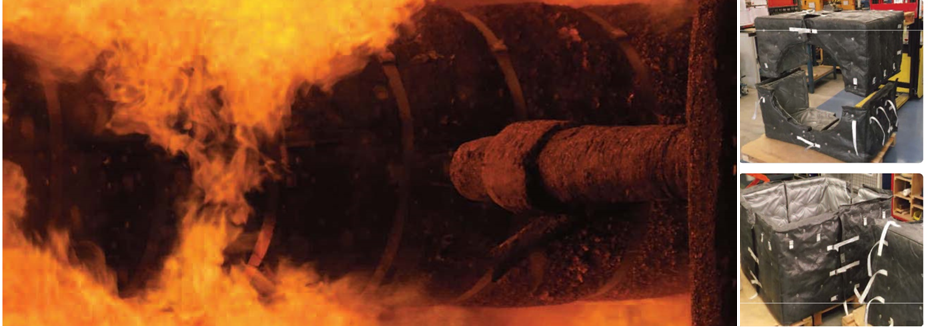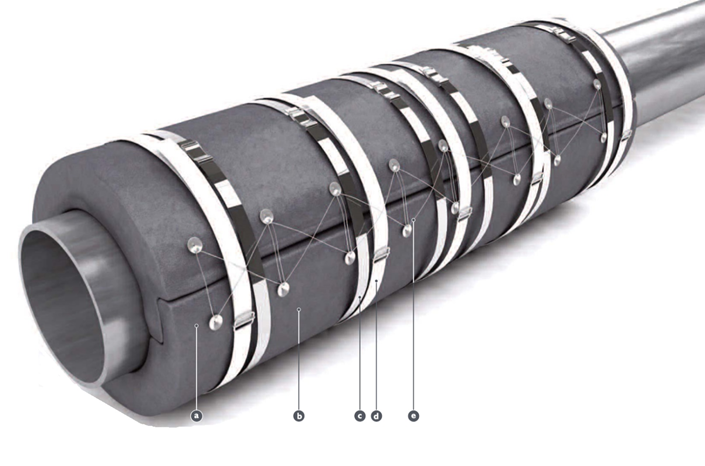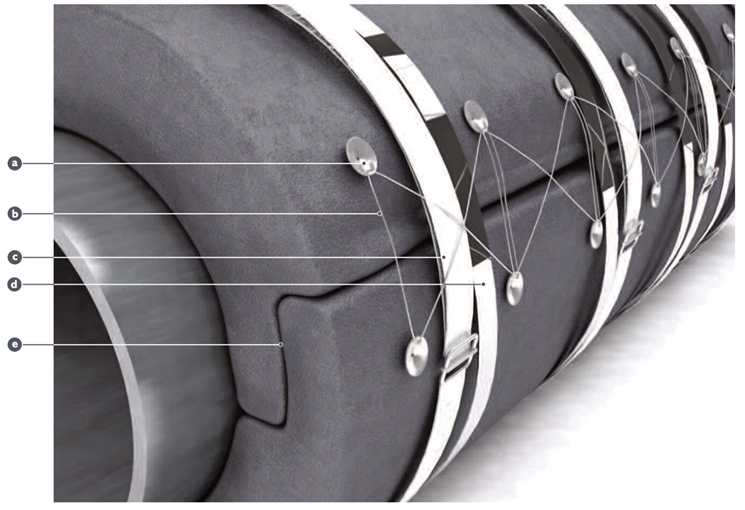Jet Fire Jacket – up to 175 minutes of jet fire protection
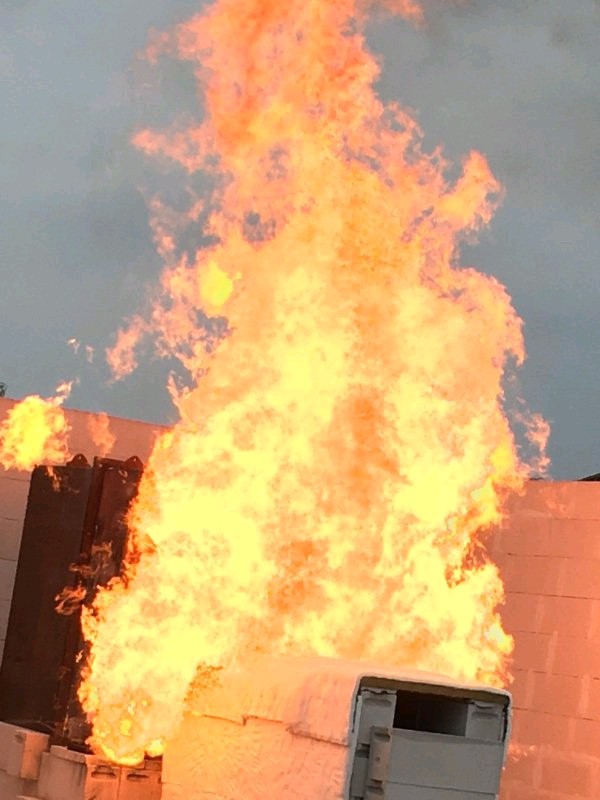
A gas leak in a petrochemical installation often results from cracking or failing flange connections on pipes or tanks. If a leak occurs under a pressure greater than two bar, the gas will escape and entrain air so that a flammable concentration is quickly reached. This flammable mix can ignite immediately and spread rapidly. A fire can also occur if a liquid such as LPG is released under pressure. In this case, LPG will evaporate almost completely, but a remaining part will evaporate and also absorb heat, contributing to the ignition.
These types of fires, also known as jet fires, reach a flame temperature of 2282 °F within 5 minutes and are the most violent fire scenarios due to the turbulent combustion of the flammable gas / air mix and the eroding of the steel. The intensity of the flow of heat that is released during a jet fire, also called heat flux, is on average around 320 kW / m2 after the first 5 minutes.
A gas fire in the oil & gas sector often results in the loss of lives and millions in operational damage as a result of a shut-down. In addition, it also has a major negative impact on the climate and environment. The devastating effect of a jet fire can be limited by providing the critical components such as valves, flanges and valves with an efficient passive fire-safe system. In this way, control will continue to function and parts of the plant can be switched off in time.
Jet Fire Jacket system for protecting petrochemical equipment and installations
The Jet Fire Jacket system is a flexible, tailor-made solution that has been tested and certified according to the international standard ISO 22899-1; “Determination of resistance to jet fires of passive fire protection materials.” The configuration of the fire-resistant mattress consists of high-quality insulation materials that have been developed to reduce extreme temperatures in minimum material thickness.
The Jet Fire Jacket system offers a jetfire fire protection for pipes up to 150 minutes and for fire barriers, tanks and equipment, the system offers a fire resistance of up to 175 minutes.
The fabric on the outside of the Jacket system is not only resistant to gas fires but also resistant to weather influences and therefore suitable for outdoor applications.
[table id=9 /]
[table id=10 /]
Fire barriers / fire walls, tanks, vessels and boilers
For the application as a fire barrier and around tanks, vessels and boilers, the configuration of the Jet Fire Jacket is the same as that of the application around piping. The only difference is that the jacket must be installed without overlap. The fabric is in fact extended on the outside, which covers the seams. Overlap of the mattress itself is therefore not necessary.
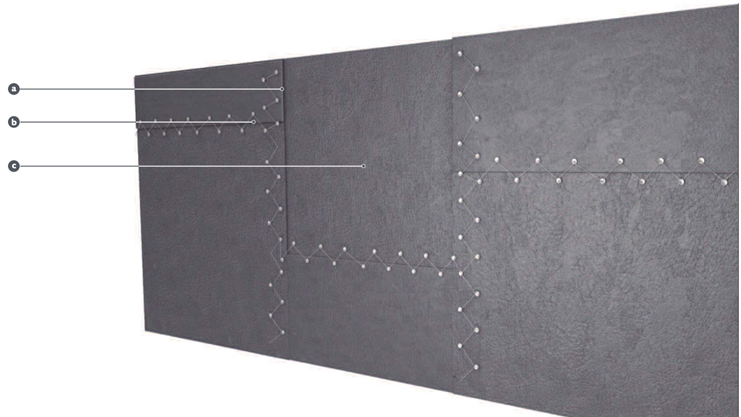
[table id=11 /]
Process equipment – protecting valves, flanges and actuators for jet fires
For the fire protection of valves, flanges and actuators, the Forfyre Jet Fire Box is a suitable solution if there is sufficient space available for a sturdy stainless steel box. However, if there is limited space around the equipment to be protected, the Jet Fire Jacket is the best solution. The Jet Fire Jacket has successfully passed the ‘edge corner’ fire test, making it a proven fire protection solution for process equipment.
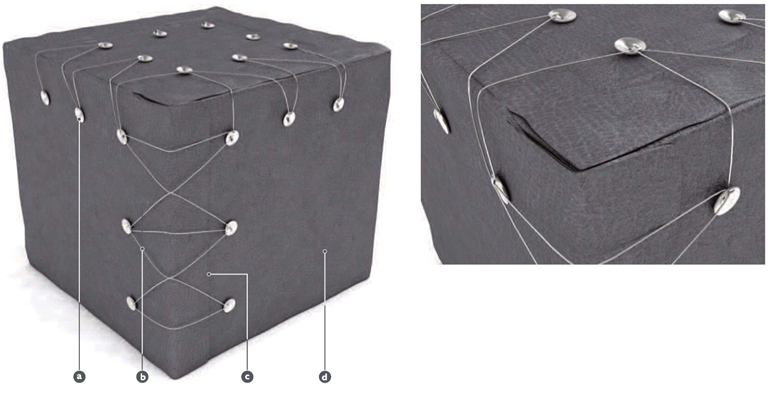
[table id=11 /]
Intensively tested
Under the supervision of Lloyds Register, various tests were carried out at DNV GL on the Jet Fire Jacket system, which achieved a fire resistance 150 minutes. During these 150 minutes, the average temperature of the component to be protected was remained below 752 ° F;
| 60 min | 90 min | 120 min | 150 min |
| 287 °F | 431 °F | 581 °F | 743 °F |
[inbound_button font_size=”20″ color=”#c8232b” text_color=”#ffffff” icon=”paperclip” url=”http://www.forfyre.com/contact” width=”” target=”_self”] Ask for our certificates! [/inbound_button]


